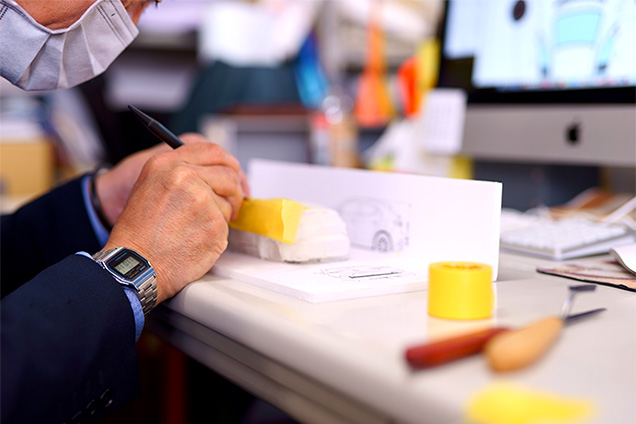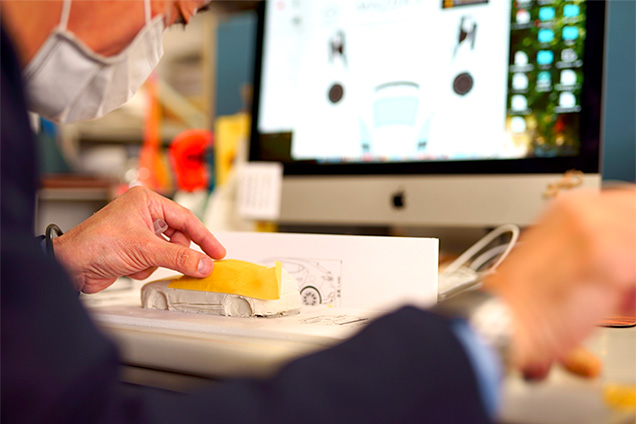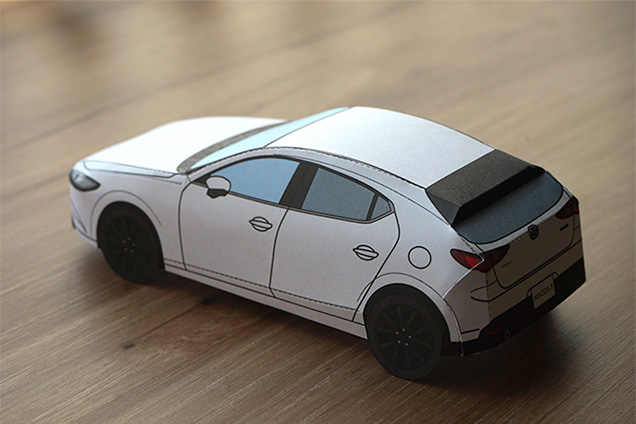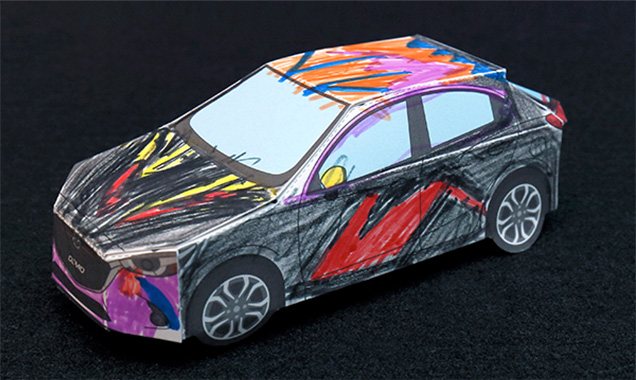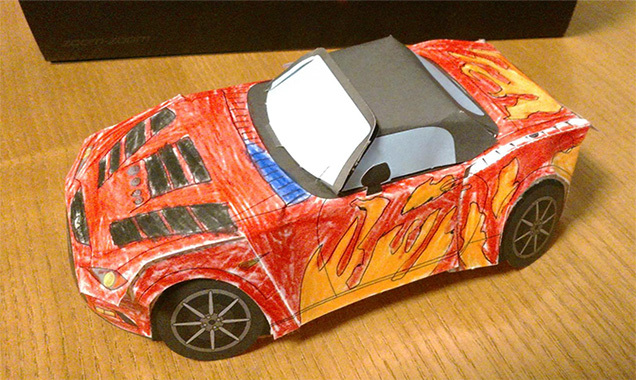Alongside the CX-3, CX-5, MX-5, Mazda2, and Mazda3, paper craft versions of the nostalgic Cosmo Sport, R360 Coupe, Luce, and Familia, as well as three colored versions of the Mazda3 (Launched in 2019), complete this impressive lineup.
Following their debut eight years ago, Mazda's paper craft cars have been enjoyed around the world. But do you know how they are created?
One of Mazda's designers and a specialist designer from outside the company collaborate to develop these ingenious models.








